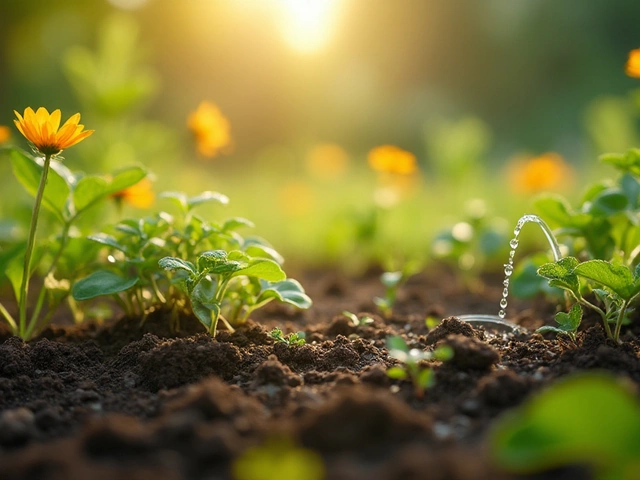Fix Hard Soil: Quick, Practical Steps for Softer, Healthier Garden Ground
Hard, compacted soil feels like a brick wall beneath your spade. Plants struggle, water runs off, and you end up wasting effort. The good news? You don’t need a massive budget or fancy equipment to fix it. A few everyday tricks—organic matter, gypsum, sand, and smart digging—can turn stubborn ground into a plant‑friendly medium.
Add Organic Matter and Let It Work
Compost is the superhero of soil repair. Spread a 2‑3 cm layer of well‑rotted compost over the hard area and work it into the top 15‑20 cm with a garden fork or spade. The microbes in compost break down clay particles, creating tiny channels for air and water. If you don’t have compost, use kitchen waste, leaf mold, or aged manure. The key is to let it sit for at least a week after mixing before planting—this gives the organic matter time to loosen the dense structure.
Gypsum: The Calcium Boost That Doesn’t Change pH
For truly hard clay, gypsum (calcium sulfate) works wonders. It replaces sodium on clay particles, allowing them to separate more easily. Sprinkle about 30 g per square meter, water it in, and then till the soil lightly. You’ll notice the soil breaking apart faster during the next digging session. Gypsum is safe for most garden plants and won’t raise soil pH, so you can use it without worrying about upsetting your plant’s preferences.
Another simple addition is coarse sand. Mix sand at a ratio of 1 part sand to 4 parts soil. Too much sand can create a concrete‑like mix, so keep the proportion modest. Sand improves drainage and creates larger pores, which helps roots spread.
If you prefer a no‑dig method, try a thick mulch layer of straw, wood chips, or shredded leaves. Mulch protects the surface from rain impact, slowly adds organic matter, and encourages earthworms—nature’s built‑in soil aerators. Within a few months you’ll see the soil becoming noticeably looser.
Deep Tilling or Double‑Digging for Stubborn Spots
When the soil is rock‑hard, a quick surface mix won’t cut it. Use a garden fork to break up the top 20 cm, then turn the soil over. For deeper fixes, do a double‑dig: dig a trench 30 cm deep, move the soil to one side, add compost and gypsum to the exposed layer, then fill back in. Repeat the process on the opposite side. It’s labour‑intensive but gives a permanent boost to soil texture.
Cover crops are a long‑term partner in softening soil. Sow fast‑growing beans, clover, or rye in the off‑season. Their roots pierce compacted layers, and when you cut them down, you leave a network of channels that stay open for future crops.
Finally, test your soil’s drainage. Dig a 30 cm hole, fill it with water, and watch how long it takes to drain. If water disappears within an hour, your amendments are working. If it lingers, add more sand or organic matter and repeat the test.
Fixing hard soil is all about patience and a few basic ingredients. Start with compost, add gypsum or sand where needed, and give the soil time to breathe. In a season or two, you’ll notice healthier roots, better water absorption, and a garden that feels easier to work with. Happy digging!
How to Fix Hard Soil in Your Garden for Healthier Plants
Fixing hard soil in your garden is easier than you think. Discover proven tips, DIY tricks, and why your plants will thank you for it.
About
Gardening
Latest Posts


Epsom Salt Uses for Plants: Boost Your Green Thumb
By Alden Thorne Feb 7, 2025

Do Plants Really Purify the Air? The Truth About Houseplants and Indoor Air Quality
By Alden Thorne Jun 14, 2025

Rice Farming Profitability: What Really Pays Off?
By Alden Thorne May 10, 2025

